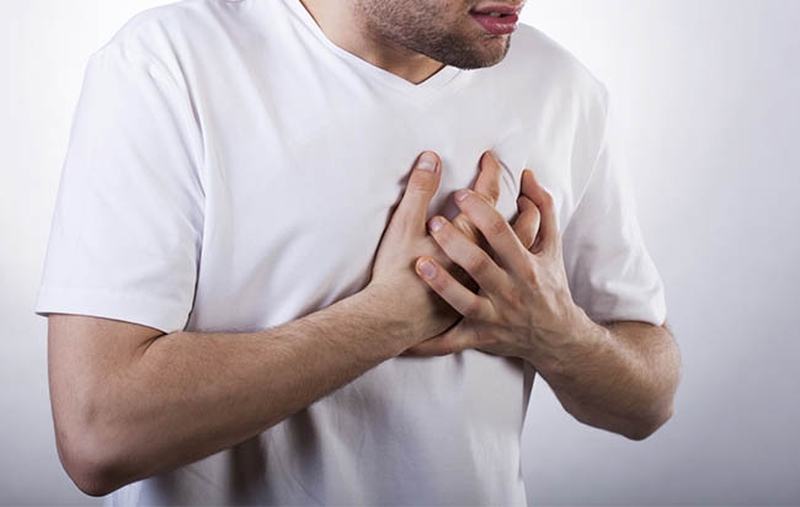Heartburn is a common term used to describe a symptom of an upper gastrointestinal tract problem, which incidentally is not a proper medical term. As much as 40 percent of adults experience chronic heartburn. As this is fairly common, it is easy to assume that many would be able to answer the question “What does heartburn feel like?” However, a lot of people are still confused as to how heartburn feels like, and how different it is from other common gastrointestinal problems such as indigestion and reflux.

What Is Heartburn and What Does It Feel Like?
Many people may be led into thinking that this has something to do with the heart, which is not the case. Heartburn is purely a gastrointestinal tract symptom. It is the sensation felt when acid from the stomach moves up into the esophagus. An estimated, 60 million Americans experience this once every month.
Heartburn is usually a burning sensation felt behind the breastbone which happens after meals, which can last from a few minutes to several hours. The pain can occur after bending over when lying down or eating. This may be accompanied by a hot, acidic, or salty-tasting fluid at the back of the throat. The patient may also have difficulty in swallowing or a feeling of food getting stuck in the throat or the middle of the throat. Chronic heartburn can cause a cough, sore throats, and hoarseness.
Most of the time, doctors no longer see patients with heartburn as most over the counter treatments are quite effective, and the only time patients should consult a doctor is when these medications no longer work.
Other Conditions That Can Mimic Heartburn
Heart Attack or Heart Disease
Chest pains called angina, which is due to the lack of blood flow to the heart, may feel similar to heartburn. Angina often feels like a squeezing, heaviness, or pressure on the chest. Patients with angina often feel a sudden tightness of the chest. This pain can get worse with physical activity or emotional stress. Unlike heartburn, wherein the pain moves vertically (following the direction of the throat), angina pains may radiate towards the arms and the jaw. These chest pains, do not appear with oral symptoms of acidic or bitter tastes, which may be experienced with heartburn. Heart diseases often occur in situations with increased heart action, such as strenuous physical activity.
Gallstones
Gallstones are literally stones that formed within the gallbladder. These stones can block the passage of bile and may cause irritation of the duct or the gallbladder itself and its surrounding areas, producing dull or sharp pain, near the upper-right side of the abdomen or in the midline, just below the breastbone. The pain usually occurs after eating. The location of the pain and its timing with food can cause this to be mistaken for heartburn.
Hiatal Hernia
This is when the upper portion of the stomach moves above the diaphragm, into the chest cavity, from within the abdominal cavity. This can cause chest pains, belching, nausea, and can cause food and stomach acid to move up into the esophagus, causing heartburn.
Gastroparesis
A complication of diabetes, this occurs when diabetes is not controlled properly, leading to nerve damage to the digestive tract. Do you know what does heartburn feel like? The condition itself causes symptoms similar to heartburn since it slows down of the movement of materials within the stomach.
Esophagitis
Esophagitis is an inflammation of the esophagus, caused by a variety of factors like frequent acid reflux which can lead to the development of more heartburns. The esophagus can also be inflamed when it comes into contact with certain medications, which causes irritation of the lining. Ingestion of allergens can also cause a build-up of white blood cells in the esophagus, which later develops into eosinophilic esophagitis, another type of esophagitis.
Costochondritis and Pleuritis
Both are inflammation in the chest area, but of different parts; the first one is about the cartilage connecting the ribs to the breastbone and the second one concerns the linings of the lungs and the inside of the chest cavity. Both may be related to infection. Costochondritis pain can be demonstrated by tenderness when the affected area is touched. Pleuritis pain is usually felt as chest pain when you take deep breath or move around.
Stomach ulcer
This is a pain in the upper abdomen, felt as gnawing or burning. The pain sometimes moves up the chest. Acid-suppressing medications can help relieve the pain related to this condition. This is commonly caused by infection with the bacteria Helicobacter pylori. Chronic anti-inflammatory drug use can also cause the development of stomach ulcers.
Esophageal cancer
If you know "what does heartburn feel like", then you would know the symptoms of this cancer. The signs and symptoms of esophageal cancer closely mimic that of heartburn, and though this is a rare condition, its rising incidence in the United States may be reason to suspect this condition whenever heartburns recur frequently, especially you are smoking or heavy drinking.
Anxiety
Although anxiety does not cause gastroesophageal reflux disease, it can worsen symptoms. Anxiety related heartburn can occur and this is not just reflux so that it does not respond to reflux treatments. Reduction of the anxiety and stress can ease the heartburn.
View All Comments /Add Comment